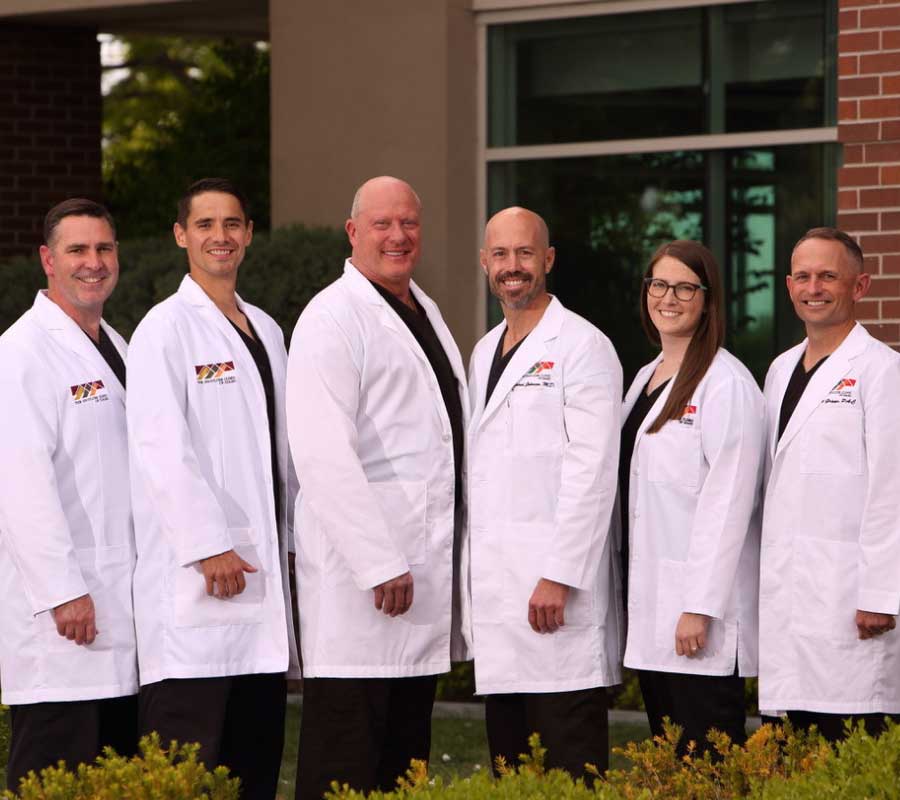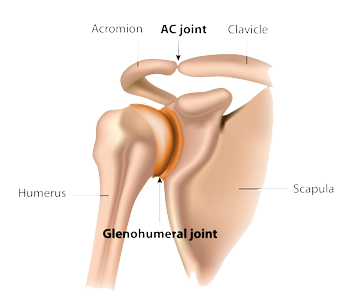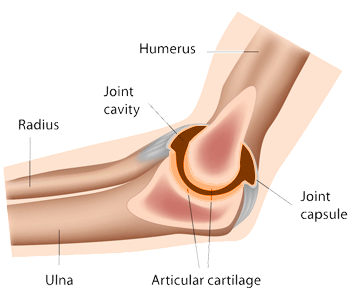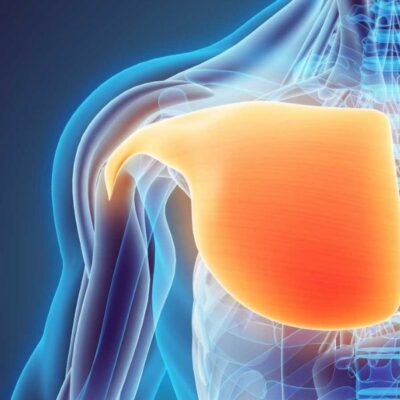Pectoralis Tendon Tear Specialists

Are you an athlete who participates in weight training? If so, you may be at risk of tearing your pectoral muscle. A pectoral tear is most commonly found in male athletes due to weight training and other athletic activities and generally occurs during a bench press or eccentric contraction. The pectoralis tendon tear specialists at the Shoulder Clinic of Idaho provide diagnosis and both surgical and nonsurgical treatment options for patients in the Boise area who have sustained a pec tear. Contact the Shoulder Clinic of Idaho team today!
What is a Pectoralis Tendon Tear?
The pectoralis muscles, commonly called “pecs” are large, powerful muscles in the front of the chest wall. The pectoralis tendon connects the pectoralis muscle from the sternum (center of the chest) and clavicle (collar bone), to the humerus (upper arm bone.) The pectoralis muscles help move the arms forward and backward, giving strength and stability to the shoulder while lifting heavy objects. There are two pectoralis muscles on each side of the chest: The pectoralis major and the pectoralis minor muscles. The pectoralis major muscle is the larger of the two muscles and is, most commonly, the muscle that is injured. If the pectoralis major tendon is pulled away from the bone, a pectoralis tendon tear occurs. The pectoralis major muscle is divided into two parts: The sternal head and the clavicular head. These two parts get their name from the origin of the muscle – the sternum and the clavicle.
A rupture of the pectoralis major tendon, or pectoralis tear, typically only involve the larger sternal head (partial rupture). However, more significant injuries can occur where both divisions or both heads are involved resulting in a tear of the sternal head as well as the clavicular head of the pectoralis major tendon (complete rupture.) Patients from Boise, Meridian, Nampa, and the surrounding communities of the Treasure Valley can be evaluated and treated for a pectoralis tendon tear by the orthopedic specialists at The Shoulder Clinic of Idaho. The shoulder specialists have experience treating these complex injuries successfully and are dedicated to returning patients to their pre-injury lifestyle as quickly as possible.
Are there different types of pectoralis tendon tears?
Tears of the pectoralis tendon can be complete or partial and are categorized by the severity of the injury:
- Type 1 – The pectoralis major tendon tears off the humerus.
- Type 2 – The area where the muscle begins to transition to a tendon, known as the muscle-tendon-junction (“musculotendinous” junction) tears or a musculotendinous junction strain.
- Type 3 – The rupture is within the pectoralis major muscle and the pectoralis major tendon remains intact.
- Type 4 – The pectoralis major muscle tears off the sternum.
Type 1 and 2 pectoralis tendon tears are most common and are often repairable.
What causes a pectoralis tendon tear?
The pectoralis major tendon is usually injured during what is called an eccentric contraction. This happens when the external force is applied to the muscle while the fibers of the muscle are lengthening. Tears of the tendon may occur when the force applied to the muscle and tendon exceed the strength of its attachment to bone. One of the more common mechanisms of injury occurs during bench press, or bench press activities, as the arms and hands move from an extended position to a position closer to the chest. This action causes the pectoralis major muscle to stretch as the hands reach the chest. Patients usually report lifting a significant amount of weight as the pectoralis major tendon tear occurs.
A pectoralis major tendon tear was once an uncommon sports injury. However, in the last several years, the specialists at The Shoulder Clinic of Idaho have seen an increasing number of workers and athletes, both professional and recreational, with this type of injury. Common activities associated with a pectoralis tendon tear are: Weight lifting (especially bench pressing), wrestling, football and rugby.
What are the symptoms of pectoralis tendon tear?
The pectoralis major makes up a large part of the upper chest. Patients with pectoralis tendon tears typically present the following symptoms:
- Sudden, severe pain at the time of injury.
- Popping or snapping sound at the time of injury.
- Swelling and bruising often involving the arm where the pectoralis tendon attaches to bone.
- Weakness and limited motion, especially when bringing the arm toward the body.
- Physical deformity of the muscle on the chest wall.
How is a pectoralis major rupture diagnosed?
For patients in Boise, Meridian, Nampa, and the surrounding communities of the Treasure Valley, the specialists at The Shoulder Clinic of Idaho will perform a thorough physical exam. If a torn pectoralis tendon is suspected, an MRI scan may be ordered to confirm the diagnosis and show the severity of the injury.
What is the treatment for a torn pectoralis major?
The severity of the pectoralis tendon tear, the type and location of the tendon tear, the chronicity of the tendon tear, the patient’s age, the patient’s level of activity, and the patient’s desired goals will play a role in their treatment. Some muscle strains can be treated non-surgically, whereas large partial and complete tears of the pectoralis major tendon often require surgery.
Non-surgical treatment:
Strains of the pectoralis muscle require rest and ice; and patients are asked to discontinue activities that cause pain or have caused the injury. Non-steroidal anti-inflammatory medications are sometimes recommended to aid in pain management and to reduce swelling.
Surgical treatment:
Pectoralis tendon tears that are classified as Type 1 or Type 2 can usually be repaired through surgery. Surgical repair is done by reattaching the torn and retracted tendon to its original insertion on the arm bone (humerus). Care is taken during the procedure to protect the pectoralis major tendon, the deltoid muscle, and the biceps tendon, as well as the neurovascular structures of the shoulder which are in close proximity. The specialists at The Shoulder Clinic of Idaho have experience and special training in treating these types of injuries. A variety of techniques can be used to reattach the tendon to the bone, often using strong sutures and an anchor device. More severe tears may require a tendon transplant, either from the patient’s own body (autograft) or from a donor tendon (allograft) to complete the repair.
For more information on pectoralis tendon tears or to see if you are a candidate for pectoralis tendon rupture repair, please contact the shoulder specialists at The Shoulder Clinic of Idaho, serving Boise, Meridian, Nampa, and the surrounding communities of the Treasure Valley.



